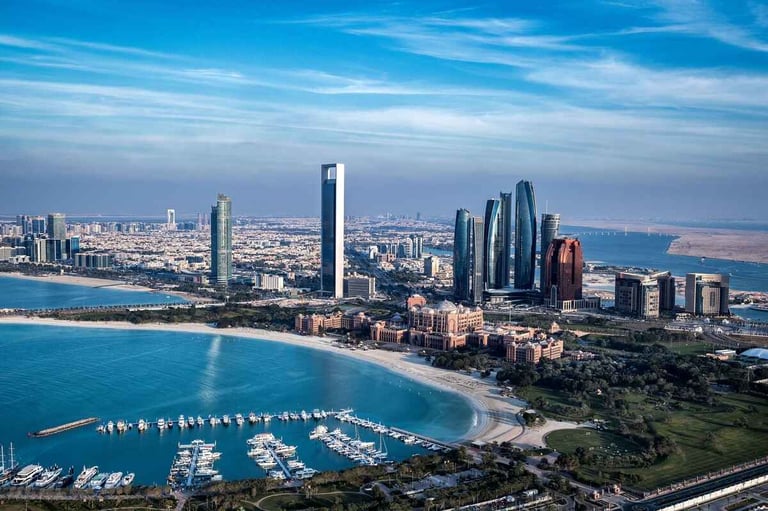The OPEC Monthly Oil Market Report (MOMR) for July anticipates that near-term economic activities in the Middle East will remain robust, driven primarily by the non-oil sector, which is a crucial factor in regional GDP growth.
Furthermore, MOMR highlighted that tourism is set to make a significant contribution to the GDP of several countries in the region. Low inflation and easing financial conditions are expected to stimulate private investment and consumption. Meanwhile, the monthly report indicated that the latest U.S. tariffs are likely to have a limited effect on the region due to exemptions granted for oil and gas and the region’s minimal exposure to U.S. trading.
Additionally, the current surge in travel and tourism is projected to continue, with gasoline, transportation diesel, and jet kerosene expected to lead oil demand growth, forecasted to reach 181 tb/d year-on-year in the third quarter of 2025. Demand for power generation, spurred by warmer weather, is anticipated to bolster the demand for the ‘other products’ category, which includes direct crude burning in the region.
Stable residual fuel oil demand
In 2025, the demand for major oil products, including petrochemical feedstock, LPG/NGLs, and naphtha, is expected to remain strong, supported by new capacity additions as many countries in the region focus on petrochemicals to leverage higher margins. Furthermore, transportation fuels such as gasoline, diesel, and jet/kerosene are projected to benefit from increased driving mobility and strong air travel. Diesel oil demand is anticipated to gain from construction activities in Saudi Arabia.
Residual fuel oil demand is also expected to remain stable, supported by the power sectors in Saudi Arabia and Iraq. In terms of specific products, the demand for LPG/NGLs is expected to drive oil product demand growth, with an increase of 45 tb/d year-on-year. Gasoline and diesel demand are projected to rise by approximately 40 tb/d and 35 tb/d year-on-year, respectively. Jet/kerosene is forecasted to increase by 25 tb/d year-on-year, and naphtha is expected to see a rise of 30 tb/d year-on-year. Demand for residual fuel oil is projected to grow by 10 tb/d year-on-year. However, the ‘other products’ category is expected to remain weak. Overall, oil demand in the region is forecasted to increase by 143 tb/d year-on-year, averaging 9.0 mb/d in 2025.
In 2026, the ongoing contribution of non-oil activities to regional GDP is anticipated to persist, bolstered by government infrastructure spending. These factors, along with solid requirements from the petrochemical industry and healthy mobility levels, are expected to support year-on-year oil demand growth of 143 tb/d. Overall, oil demand in the Middle East is projected to average 9.1 mb/d in 2026.
Read more: OPEC projects $10.6 trillion investment needed for oil sector by 2040
Non-oil sector growth forecast
In its latest edition of the Middle East Economy Watch, PwC revealed in April 2025 that the Middle East’s economy continues to show resilience despite challenges arising from oil output cuts and geopolitical tensions. The report emphasized the forthcoming strength of the non-oil sector, buoyed by a solid non-oil GDP performance in 2023 and strong Purchasing Manager Indices (PMI) in key economies such as Saudi Arabia and the UAE in early 2024.
The report also underscored the potential of green finance in promoting economic diversification, job creation, and attracting foreign direct investment (FDI) across the region. It highlighted three main themes, which include:
Despite OPEC+ members’ decision to extend production cuts into the second quarter of 2024, the non-oil sector in the Middle East remains resilient. The Middle East Economy Watch anticipates that oil production cuts will lead to a contraction in the region’s oil sector in 2024. For instance, Saudi Arabia has temporarily halted its plans to increase oil production capacity due to supply and demand dynamics. This decision allows for increased capital investment in alternative energy projects, including gas and renewable energy sources.

Infrastructure spending and oil demand
“Oil demand plays a key role in influencing the growth of oil-exporting Middle East countries. Nonetheless, strong growth in the non-oil sector is expected to counterbalance these impacts,” stated Richard Boxshall, partner and chief economist at PwC Middle East.
Moreover, Qatar has revealed plans to expand its liquefied natural gas (LNG) capabilities with the North Field West project, marking a significant step in Qatar’s strategy to enhance its LNG production capacity. This move further solidifies the country’s position in the global LNG market. With gas gaining more favorable prospects than oil, its appeal is rising due to its lower carbon emissions.
Disruptions to Red Sea trade have reignited discussions about alternative trade corridors. Proposals such as the India-Middle East-Europe Economic Corridor (IMEC) and Iraq’s Development Road are currently under consideration. However, the Middle East Economy Watch notes that progress on either initiative is contingent upon resolving ongoing conflicts.
Growth of green bonds in the region
Green financing is gaining traction in the Middle East, following the successful outcomes of COP28 and the introduction of green finance frameworks. The Middle East Economy Watch reveals that the issuance of green bonds and sukuk in the region doubled to $24 billion in 2023, led by the UAE and Saudi Arabia. Additionally, Oman’s publication of a sustainable finance framework and Qatar’s upcoming debut green bond further emphasize the region’s commitment to sustainability and economic diversification. Furthermore, Saudi Arabia is contemplating a sovereign green issuance, in addition to the substantial sums raised by the PIF.








